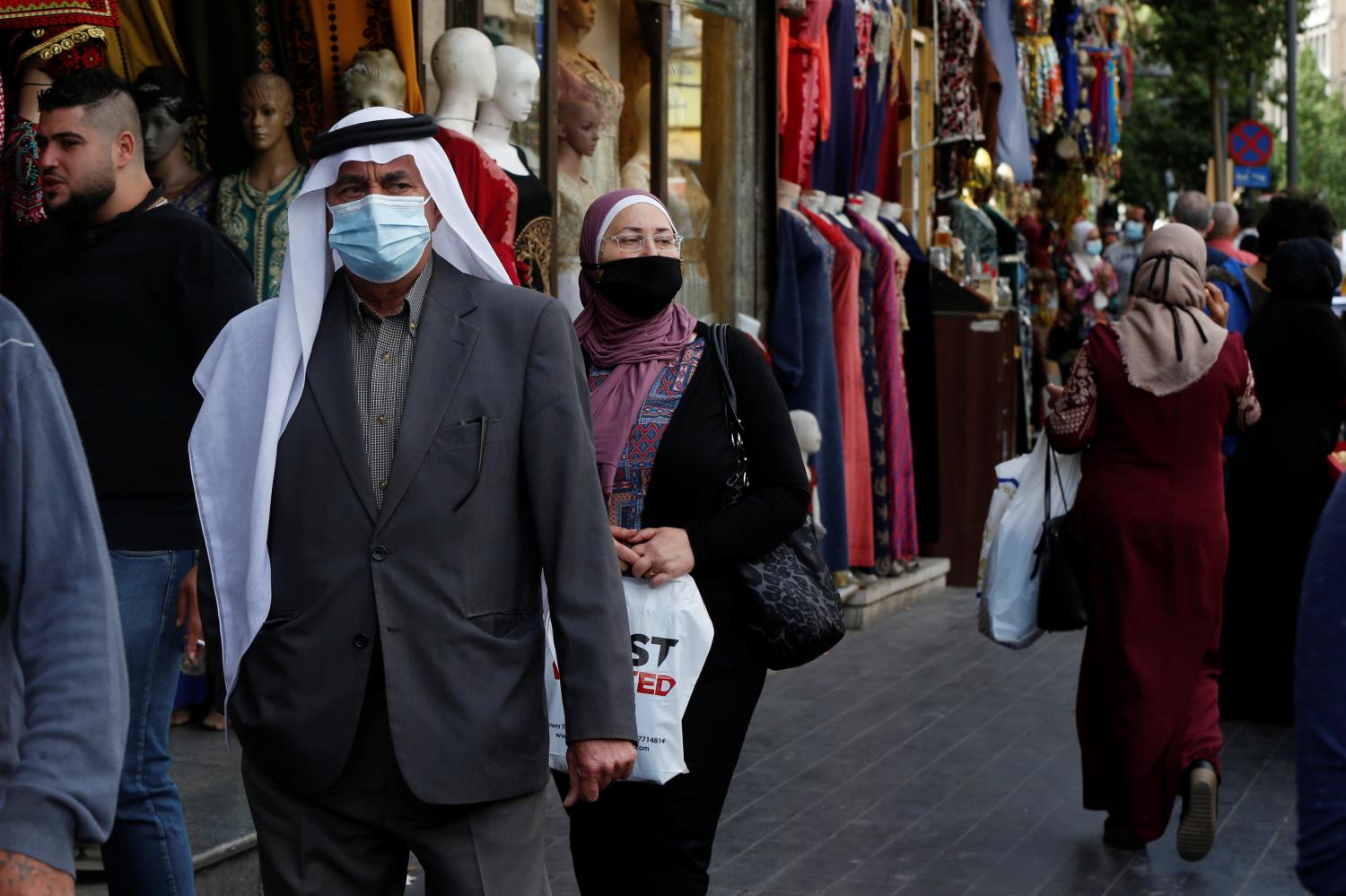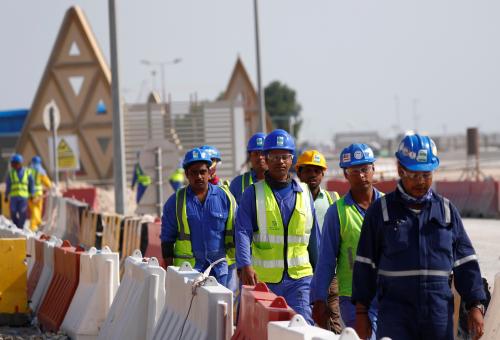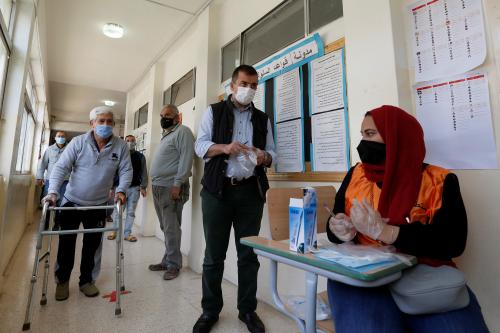Content from the Brookings Doha Center is now archived. In September 2021, after 14 years of impactful partnership, Brookings and the Brookings Doha Center announced that they were ending their affiliation. The Brookings Doha Center is now the Middle East Council on Global Affairs, a separate public policy institution based in Qatar.
On February 27, 2020, Jordan started COVID-19 screening at airports and implemented a two-week quarantine for positive cases. The kingdom confirmed its first coronavirus case on March 2. On March 16, when Jordan had 30 confirmed cases, the government enacted National Defense Law 13 of 1992. It announced a state of emergency on March 19 when 69 cases were confirmed. The government closed all borders and implemented a national lockdown considered one of the strictest governmental measures to be implemented in any country in response to COVID-19. By mid-April, Jordan started lifting restrictions on economic activity, ultimately lifting them altogether on May 3 while retaining a nightly curfew. Jordan’s initial measures to halt the spread of COVID-19 were among most successful anywhere, with the country flattening the curve and limiting the number of infection cases.
As of July 31, Jordan had reported only 1,193 confirmed cases of COVID-19, evidence of the initial success of its approach. However, it has experienced a significant increase in cases, with confirmed cases reaching 265,024by December 15 and deaths reaching 3,437. The country’s fatality rate in mid-December was 340.24 cases per million population, among the lowest in the Middle East and North Africa (MENA). As of December 15, 2,871,550tests had been carried out, representing 284,264 per million population, among the highest testing rates among middle-income MENA countries, due to a well-managed collaboration between the Ministry of Health and private sector laboratories.
The Jordanian National Committee for Epidemics, a body established in 1984 to research epidemics, spearheads Jordan’s COVID-19 response, assessing the epidemiological situation in the country and recommending policy measures. In addition, the Jordanian government has created a Coronavirus Crisis Cell within the existing structure of the National Center for Security and Crisis Management (NCSCM), an umbrella organization under the Royal Court established in 2015 to coordinate and unify the efforts of national institutions during national crises. The Jordanian military also played an important role in coordinating response measures.
Jordan’s health sector is relatively advanced and has played a major role in fighting the pandemic. The government has invested heavily in the health sector, as evidenced by the 2017 health expenditure. However, overall health expenditure has followed a downward slope over the past eight years, from 9.5 percent of gross domestic product (GDP) in 2009 to 8.1 percent in 2017. There are concerns that Jordan’s capacity to provide public health services could be strained should the virus spread among vulnerable groups, including its large refugee population.
In terms of the pandemic’s economic repercussions, experts predict unemployment to soar, affecting mostly workers in the informal economy, which employs about half of the total workforce. Some economists expect the unemployment rate to reach 30 percent by the end of 2020. Jordan will also be adversely impacted by the return of Jordanian expatriates working abroad, principally from the six Gulf Cooperation Council (GCC) countries. It has been reported that tens of thousands of Jordanians working in the Gulf have lost their jobs.
The Brookings Institution is committed to quality, independence, and impact.
We are supported by a diverse array of funders. In line with our values and policies, each Brookings publication represents the sole views of its author(s).



